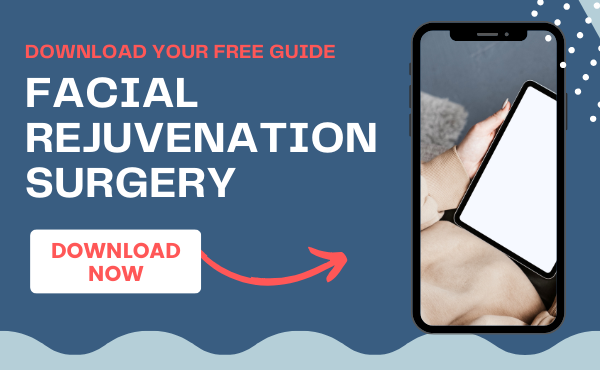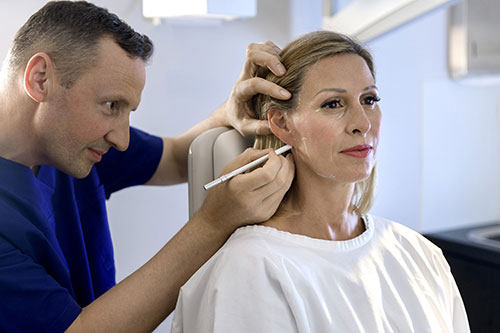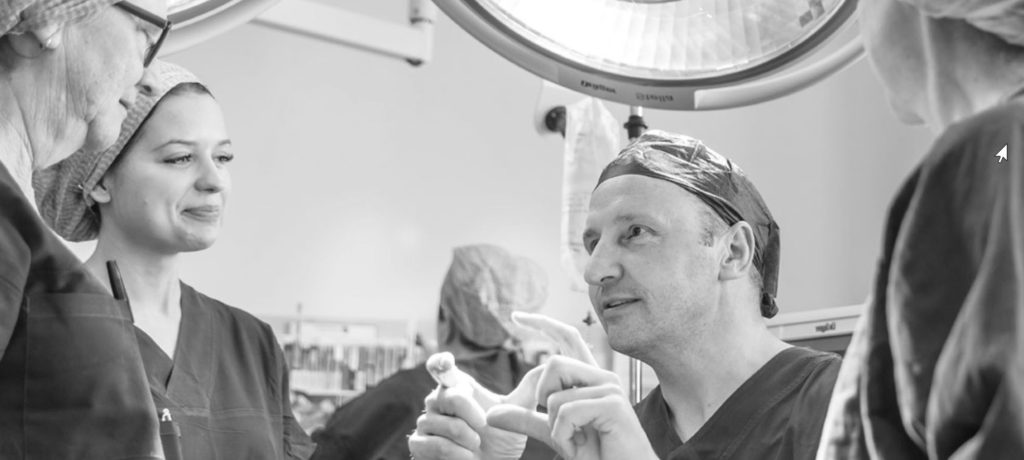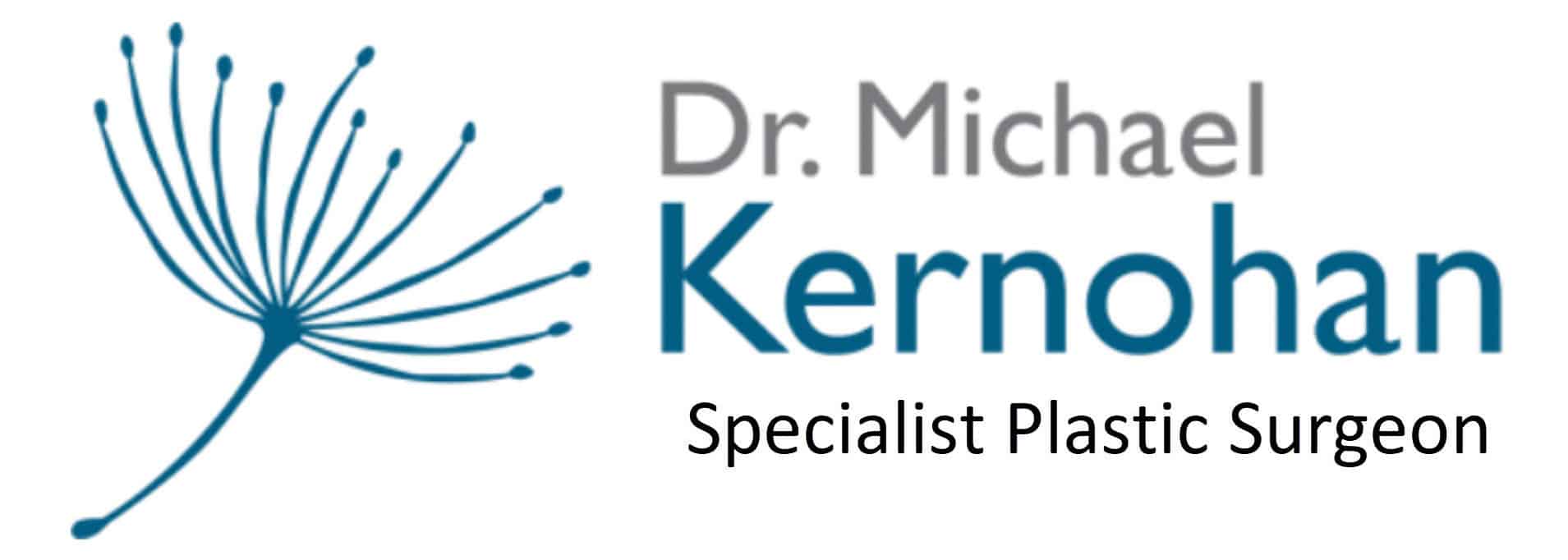Facelift Surgery Sydney with Dr Kernohan
A facelift, also known as meloplasty or rhytidectomy, is a surgical procedure that tightens and removes sagging skin on the face and neck. Facial muscles may be surgically tightened to improve their tone. Excess fat may also be removed or repositioned as part of the surgery.
Most facelifts are performed for people aged between 40 and 65, but older people can also have facelifts.
Dr Michael Kernohan is a specialist plastic surgeon and top surgeon in Southwest Sydney. Find out more about what a facelift procedure involves, the range of recovery time, the benefits and risks of surgery.
CLICK to Download Dr Michael Kernohan Facial Rejuvenation Guide

Benefits of a Facelift
The aim of a facelift is to reduce the effects of the natural ageing process by changing the contours of your face and neck. A facelift can help to make your face and skin appear smoother.
A facelift may also be combined with other surgical procedures such as brow lift, eyelid surgery or nose reconstruction. The bone structure of the face will not be changed during facelift surgery.
Is a Facelift right for me?
Facelift surgery is a highly customised procedure and may not be suitable for everyone. Dr Kernohan will assess your face, medical history, general health and plan the treatment that is best suited to you.
Facelift surgery may be a good option for you if:
- You have deep creases along the nose extending to the corner of the mouth
- You have facial fat that has fallen or drooped
- You have loss of smooth contour in the lower face with the appearance of jowls
- You have loose skin and excess fatty deposits under the chin and jaw, creating the appearance of a double chin
- You are physically healthy and you do not have medical conditions that can impair healing or increase risk of surgery
- You have realistic expectations of what face lift surgery can accomplish
- You are a non-smoker or have completely stopped smoking
Facelift surgery may not be a good option for you if you are:
- Not able to have a general anaesthetic
- Prone to bleeding tendencies or have poor healing ability e.g smoke heavily
- Too high a risk of having surgical complications e.g. a smoker who is at increased risk of complications. If you are serious about undergoing surgery, you should quit smoking
- While a facelift should alter your appearance, it will not raise sagging eyebrows, remove deep frown lines in the forehead, change your upper or lower eyelids, or get rid of wrinkles around the mouth. Other forms of surgical treatment concentrate on these areas such as brow lifts and eyelid surgery which can be combined with face lift surgery

Your Facelift consultation with Dr Kernohan Plastic Surgeon
Ensure your consultation is with an accredited plastic surgeon who is registered with AHPRA as a specialist in plastic surgery. Dr Kernohan will ask you about your general health and examine you as required.
If, after careful assessment, you are suitable for facelift surgery expect to discuss the type of surgery, principles of the operation, likely outcomes and potential risks of surgery.
You may have more than one consultation. It is very difficult to take on board all the information at just one consultation, and it is important that you have time to think about the information you have heard and a chance to ask any questions.
Key points to discuss at the consultation include:
- Your expectations and the expected outcomes of surgery
- The benefits to you of the surgery
- Any concerns about surgery risks, complications or limitations – please see below.
Before your facelift surgery
Most patients are assessed by the anaesthetic team. This assessment may include:
- Assessing your general health and fitness before surgery by carrying out various tests and investigations. These may include blood tests and if indicated an ECG (electrocardiogram – heart tracing) and chest x-ray. Photographs will provide a record for your notes to allow a comparison before and after surgery
- Discussing your current medication, any allergies you may have and information on your planned treatment and hospital services
It is important that you are completely satisfied that you have been given all the information you need and that you fully understand the risks and benefits of your surgery before you sign your consent form.
You can change your mind at any time before surgery.

The Facelift operation
Facelift surgery is most commonly undertaken under a general anaesthetic. The operation usually takes over three hours to complete.
You are fully anaesthetised for this procedure. Incisions are made around your ear and often extend into the hair bearing area of your scalp both behind and above your ears.
Normally they are very subtle once they have fully healed. The aim of the procedure is to tighten the sagged tissues under the skin then re-drape the skin without leaving a tight or pulled look.
Small drains are sometimes inserted and are gently removed the following day. For the first 2 days you have some padding around your face held on with a specially fitted garment. You need to keep the wounds dry over the first 2 days but a hair wash with baby shampoo or similar on the 3rd day is usually ok. This is often easier to do in the bath but you may need some help from someone close to you. Swelling is normal and peaks at 48 hours, bruising is also common particularly on the neck skin. It takes 10-14 days to resolve but is often easily concealed under a scarf.
Recovery after Facelift Surgery
Most patients will be awake within half an hour of the operation finishing. Pain is well controlled with medication so it normally doesn’t feel too uncomfortable. It is likely you will be ready to go home the next day.
Expect to have a quiet time at home for the first week with no heavy lifting or strenuous work. It is advisable that you will need around two weeks off work, and during the first week you will need support with shopping, housework and care of small children and pets.
You will not be able to drive for at least the first week, and possibly into the second, and then only for short journeys.
You will need to see your surgical team 7-10 days after surgery, and you should ensure you are able to see them regularly for the first few weeks, as it is common to need some regular dressings on the wounds during this time. Once all the wounds are healed it is likely the surgeon will want to see you at about three to six months after your surgery.
How much is a Facelift Surgery in Sydney?
If you want to undergo a facelift surgery in Sydney, expect to pay $12,000 to $25,000 for a SMAS Facelift & Necklift. A mini facelift can cost less. Discuss what is the suitable procedure for your particular case with the plastic surgeon.
Check out the prices and fees page for more information. Or contact Dr Kernohan’s team to set up a consultation now.
How to find the right Facelift surgeon in Sydney?
Choosing the plastic surgeon to play out your intervention is one of the most important steps to ensure the success of your procedure. An experienced, talented plastic surgeon can help you achieve the results you desire and minimise the risks and complications that could occur during the recovery period.
Make sure to take your time in choosing the plastic surgeon for your facelift surgery in Sydney. The plastic surgeon should be someone you can connect with and speak freely and honestly about your goals and expectations.

Facelift Surgery FAQs
Things to look for – When to contact your surgeon
- When you are at home after surgery, it is important to check your wounds. If they become red, swollen, and painful, or if there is a discharge, please contact your surgeon or local hospital if you are concerned. Increasing pain or bleeding is not normal and you should contact your team if concerned. In the unlikely event of having difficulty getting in touch with the practice, your local hospital Emergency Department can assess the situation.
When should I return to the hospital for a follow-up appointment?
- When you are discharged from hospital you will be given an appointment to be seen by the surgeon or nurse.
What should I do when I am at home?
- Following your operation you should be able to return to most of your normal activities within two to four weeks, although this will vary from person to person.
When can I return to work after facial surgery?
- Depending on the type of work that you do, you may be able to return to work within two to three weeks depending upon how strenuous your work is. You may feel quite tired at first. This is quite normal.
When can I return to exercise or sport?
- Light recreational activities such as walking and light exercise can usually be started after two to three weeks, gradually building up to more strenuous workouts after four to six weeks. Most sport can be resumed gently after three weeks. If the sport involves strenuous upper body movements – for example aerobics, running, golf, swimming and any racquet sports – then it is advisable not to return to these activities until about a month after surgery.
What are the risks of Facelift Surgery?
- All surgery has risks and potential complications, Dr Kernohan will explain the risks during your consultation and your consent documentation will explain the risks in detail. You can never ask too many questions. Please feel free to ask for clarification, translation or a more detailed explanation.
How long does Facelift surgery last?
- The results of a facelift usually last between five and twelve years. Most people can have up to two or three facelifts in a lifetime, depending on the extent of each procedure and the amount of scarring that occurs with each facelift. Facelift surgery does not “stop the clock” of ageing. The normal ageing process will continue after the surgery.
Are there other options for facial rejuvenation?
- A suture facelift or thread lifting, is best suited for younger and middle-aged patients whose tissues have sagged with time or sun damage. It is not recommended for people with very thin or dry skin. Dr Kernohan will need to assess your individual suitability for this type of treatment
- Non-surgical facial rejuvenation options, such as skin resurfacing (by chemical peel or laser treatments), may be undertaken at the same time as the facelift or may be done afterwards. The aim of these treatments is to treat fine lines and wrinkles often seen on sun-damaged skin around the eyes, and the mouth, which are not removed by facelift surgery.
Further Reading and Medical References
- ASPS Facelift page and facelift video
- Mayo Clinic Facelift page
- Read more about Dr Kernohan’s Trifecta Facelift




